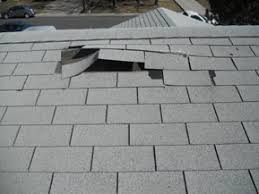How Often Should You Have Your Roof Inspected?
June 2019 by Heartland Roofing Siding and Solar
You may not pay much attention to it, but the roof of your home is what protects you from the elements. If you want to make sure that your roof stays in good shape and remains leak free, then regular inspections need to be performed.
But how often are roof inspections needed?

The National Roofing Contractors Association recommends checking your roof at least twice of year—fall and spring when the weather tends to be milder—to help spot any problems.
Not only does mild weather help make inspecting the roof easier, it also allows you to make sure that the roof will be prepared for the upcoming changes in temperature and potential seasonal weather hazards.
It’s also a good idea to inspect your roof after major weather events that involve high winds or hail. Even new roofs should be inspected after this type of situation because bad weather has the ability to damage or ruin a roof no matter what it’s age.
Although it isn’t always easy to complete this inspection as often as recommended, doing so will help prevent minor roof damage from leading to serious problems that can cause leaks and damage to the interior of the building.
Preventing minor problems from turning into major ones will also save you money in the future.
Should you hire someone to inspect your roof or should you do it yourself? There are advantages to each type of inspection, but it is important to remember that many roofing product replacement warranties will be voided or not honored if your roof hasn’t been inspected by a professional. Insurance companies tend to insist on professional roof inspections as well.
If you don’t like heights or aren’t capable of climbing a ladder, call us to do the inspection for you. Take a look at our roof inspection checklist.
Here is what we look for as we inspect your roof:
- Broken or missing shingles
- Cracked or curling caulk or sealant
- Patches of moss and lichen
- Worn, peeling or cracked plastic rubber boots around pipes or other roof projections
- Cracked or rusted spots on metal flashings (Flashings are metal roof pieces around dormers, chimneys, and vent pipes.)
- Damaged or missing chimney cap
- Shingles that are blistering, cracking or buckling
- Loose, cracked or rusted gutters
- Crumbling or missing chimney mortar
- Tree branches or other large debris
If you have asphalt shingles—the most common roofing shingles in Central Iowa—we make sure to also check your gutters for granules. These granules are what covers the surface of asphalt shingles and helps shield them from ultraviolet rays from the sun.
While some granule loss in normal over the life of your roof, a lot of granules can be a sign on shingle damage.
Conclusion
It may seem like there is a lot to think about when it comes to replacing your roof, but it will be worth it in the long run. Schedule a consultation just like you would any other important maintenance task (like changing the oil in your car). It will end up saving you time and money in the future.
Contact Heartland Roofing Siding and Solar today for a free inspection of your roof or give us a call at 515-219-4847.
